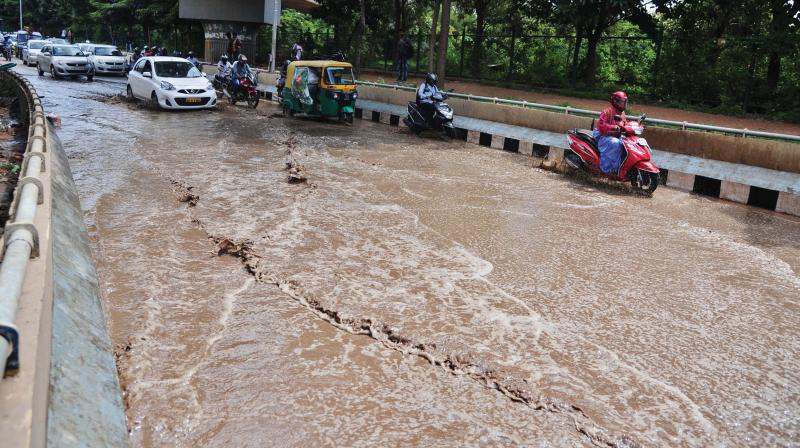By Invitation: If the Romans could do it why can't we?

Flooded neighbourhoods and mosquito-borne diseases aside, Bengalureans are faced with the herculean task of navigating pothole-ridden roads. To alleviate this yearly phenomenon, citizens petitioned the government to create a model road, which surfaced in the form of Viital Mallya road, a 500 metre stretch of concrete, complete with roadside drains, utility ducts for sanitary, electrical and water lines and a footpath making life easy for the hapless pedestrian.
The onset of monsoons in Namma Bengaluru brings with it a fair share of woes. Flooded neighbourhoods and mosquito borne diseases aside, Bengalureans are faced with the herculean task of navigating pothole ridden roads. To alleviate this yearly phenomenon, the citizens petitioned the government to create a model road, which surfaced in the form of Viital Mallya road, a 500 metre stretch of concrete, complete with roadside drains, utility ducts for sanitary, electrical and water lines and a footpath making life easy for the hapless pedestrian. Road laying is as old as civilization itself with the early Romans perfecting the science. Nothing much has changed and while advances in civil engineering help us build roads that are bigger and better, the basic road still has the same components of a solid subgrade, a well-drained subbase, a rigid base and a motorable surface layer. It’s no rocket science, one might argue, although most roads in our garden city continue to resemble the surface of the moon.
I see the problem as twofold. The first is the engineering challenge of building the roadway system replete with a good drainage network, as water and asphalt are sworn enemies. One cannot expect a long design life if the storm drain system is missing or inefficient. A circular pipe is the most efficient way to convey a fluid and hence a storm drain network with pipes and inlets, incorporated on Vittal Mallya road and Tendersure projects will withstand the test of time and give the pedestrian an even walking surface. Box drains are archaic, need constant desilting and provide a rugged surface for pedestrians.
Potholes that may surface due to water leaks or ponding of water can be fixed temporarily using cold mix asphalt, an emulsified version which is highly workable and easy to spread. Full depth repair is the chosen method for larger potholes wherein the pothole is cut out, scarified and filled with a wet mix macadam(WMM) and a bituminous layer. With this Bengaluru’s roads can be pothole free.
The second problem is more administrative than technical and the lack of responsibility, accountability and liability only compounds the issue. In the absence of coordination between the parastatals, roads are periodically cut by BESCOM, BWSSB and private telecom players to lay utilities after the “tarring” has been completed by the BBMP. METRO work along several corridors has also ruined the roads and their apathy towards the travelling public has not helped either. The interference from the political class at the BBMP means that road works also face the menace of corruption.
For Bengalureans to have a safe commute, engineers, politicians and bureaucrats alike need to own up to their respective responsibility and plan, design and build roads that assign a basic value to life.
(The writer is a member of Bangalore Vision Group & part of CiSTUP, IISc)

